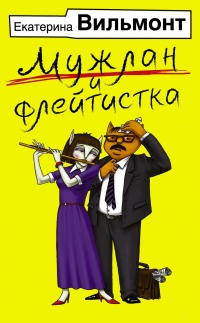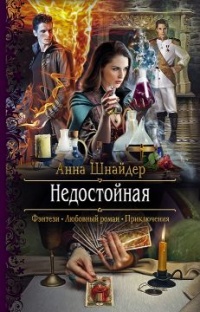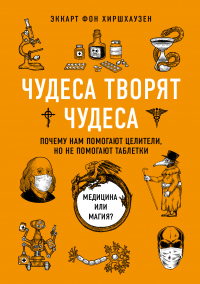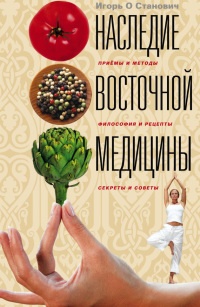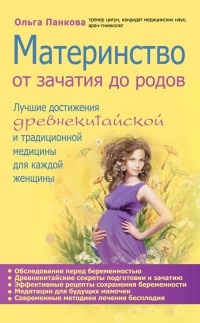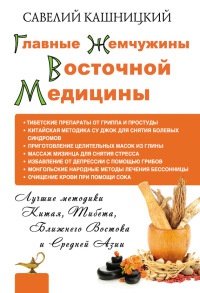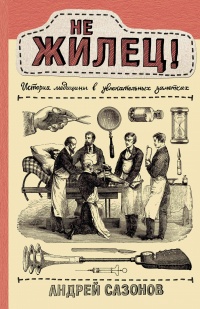Книга 0,05. Доказательная медицина от магии до поисков бессмертия - Петр Талантов
Шрифт:
Интервал:
Закладка:
Peacock M. Executed Criminals and Folk-Medicine // Folklore. 1896. September. Vol. 7. № 3. P. 268–283.
On the Fast-Track to end AIDS by 2030: Focus on location and population. UNAIDS, 2015. November 24.
Agenda for zero discrimination in health-care settings. UNAIDS, 2017. February 15.
Hood B. M., Donnelly K., Leonards U., Bloom P. Implicit voodoo: electrodermal activity reveals a susceptibility to sympathetic magic // Journal of Cognition and Culture. 2010. Vol. 10. P. 391–399.
Rosengren K. S., Johnson C. N., Harris P. L. (eds.). Imagining the impossible: Magical, scientific, and religious thinking in children. Cambridge: Cambridge University Press, 2000.
Vamos M. Organ transplantation and magical thinking // Australian and New Zealand Journal of Psychiatry. 2010. October. Vol. 44. № 10. P. 883–887.
Inspector Y., Kutz I., Daniel D. Another person’s heart: Magical and rational thinking in the psychological adaptation to heart transplantation // The Israel Journal of Psychiatry and Related Sciences. 2004. Vol. 41. № 3. P. 161–173.
Parapia L. A. History of bloodletting by phlebotomy // British Journal of Haematology. 2008. November. Vol. 143. № 4. P. 490–495.
Ghosh S. K. Human cadaveric dissection: a historical account from ancient Greece to the modern era // Anatomy & cell biology. 2015. September. Vol. 48. № 3. P. 153–169. The aphorisme of Hippocrates (trans. into lat. and eng. by Thomas Coar). London: Longman, 1822.
Tasca C., Rapetti M., Carta M. G., Fadda B. Women and hysteria in the history of mental health // Clinical practice and epidemiology in mental health. 2012. Vol. 8. P. 110–119.
Gilman S. L., King H., Porter R., Rousseau G. S., Showalter E. Hysteria beyond Freud. University of California Press, 1993
Ganz J. Herophilus and vivisection: a re-appraisal // Istoriâ mediciny. 2014. Vol. 1. № 4. P. 5–12.
Bedford D. E. The ancient art of feeling the pulse // British Heart Journal. Vol. 13. № 4. P. 423–437.
Bensaude-Vincent B., Newman W. R. (eds.). The artificial and the natural: An evolving polarity. MIT Press, 2007.
Conrad L. I., Neve M., Nutton V., Porter R., Wear A. The western medical tradition: 800 BC to AD 1800. Vol. 1. Cambridge University Press, 1995.
Horstmanshoff H. F. J., Stol M. (eds.). Magic and rationality in ancient near eastern and Graeco-roman medicine. BRILL, 2004.
Shryock R. H. The history of quantification in medical science // Isis. 1961. June. Vol. 52. № 2. P. 215–237.
Von Staden H. (ed., trans.). Herophilus. The art of medicine in early Alexandria. Cambridge University Press, 1989.
Riese W. The structure of Galen’s diagnostic reasoning // Bulletin of the New York Academy of Medicine. 1968. July. Vol. 44. № 7. P. 778–791.
Schneeberg N. G. A twenty-first century perspective on the ancient art of bloodletting // Transactions & Studies of the College of Physicians of Philadelphia. 2002. December. Vol. 24. P. 157–185.
Brain P. Galen on bloodletting: A study of the origins, development and validity of his opinions, with a translation of the three works. Cambridge University Press, 1986.
Albinali Hajar H. A. Arab gulf traditional medicine-blood letting // Heart Views. 2004. Vol. 5. № 2. P. 178–183.
Jeaffreson J. C. A Book about Doctors. Library of Alexandria, 1858.
Slesak G., Inthalath S., Dittrich S., Paris D. H., Newton P. N. Leeches as further potential vectors for rickettsial infections // Proceedings of the National Academy of Sciences. 2015. December 1. Vol. 112. № 48.
Nehili M., Ilk C., Mehlhorn H., Ruhnau K., Dick W., Njayou M. Experiments on the possible role of leeches as vectors of animal and human pathogens: a light and electron microscopy study // Parasitology Research. 1994. May. Vol. 80. № 4. P. 277–290.
Stillman J. M. The contributions of Paracelsus to medical science and practice // The Monist. 1917. July. Vol. 27. № 3. P. 390–402.
Shackelford J. A philosophical path for Paracelsian medicine: The ideas, intellectual context, and influence of Petrus Severinus (1540/2–1602). Copenhagen: Museum Tusculanum Press, 2004.
Davis A. Paracelsus: a quincentennial assessment // Journal of the Royal Society of Medicine. 1993. November. Vol. 86. № 11. P. 653–656.
Frith J. Syphilis – its early history and treatment until penicillin and the debate on its origins // Journal of Military and Veterans’ Health. Vol. 20. № 4. P. 49–58.
Paxton F. S. Liturgy and Healing in an early Medieval Saint’s. Cult: the Mass in honore sancti Sigismundi for the Cure of Fevers // Traditio. 1994. Vol. 49. P. 23–43.
Rapport S., Wright H. (eds.). Great Adventures in Medicine. New York: The Dial Press, 1952.
Keinan G. The effects of stress and desire for control on superstitious behavior // Personality and Social Psychology Bulletin. 2002. January. Vol. 28. № 1. P. 102–108.
Pearce J. M. S. The Doctrine of Signatures // European Neurology. 2008. Vol. 60. № 1. P. 51–52.
Von Staden G. The discovery of the body: human dissection and its cultural contexts in ancient Greece // The Yale Journal of Biology and Medicine. 1992. Vol. 65. № 3. P. 223–241.
Abdullah S., Dar L. M., Rashid A., Tewari A. Hirudotherapy / Leech therapy: applications and indications in surgery // Archives of Clinical and Experimental Surgery. 2012. Vol. 1. № 3. Р. 172–180.
Walter R., Robins B. (eds.) Voyage round the world in the years MDCCXL, I, II, III, IV by George Anson, Esq; Commander in Chief of a Squadron of His Majesty’s ships, sent upon an expedition to the South-Seas. London: John and Paul Knapton, 1748.
McDowell L. Vitamin history, the early years. First Edition Design Pub., 2013.
Gordon E. C. Scurvy and Anson’s voyage round the World: 1740–1744. An analysis of the Royal Navy’s worst outbreak // American Neptune. 1984. Summer. Vol. XLIV. № 3. P. 155–166.
Carpenter K. J. The history of scurvy and vitamin C. Cambridge University Press, 1988.
Harrison M. Scurvy on sea and land: political economy and natural history, c. 1780 – c. 1850 // Journal for Maritime Research. 2013. May. Vol. 15. № 1. P. 7–25.
Tröhler U. Quantification in British Medicine and Surgery 1750–1830, with special reference to its introduction into therapeutics. University College London, 1978.















